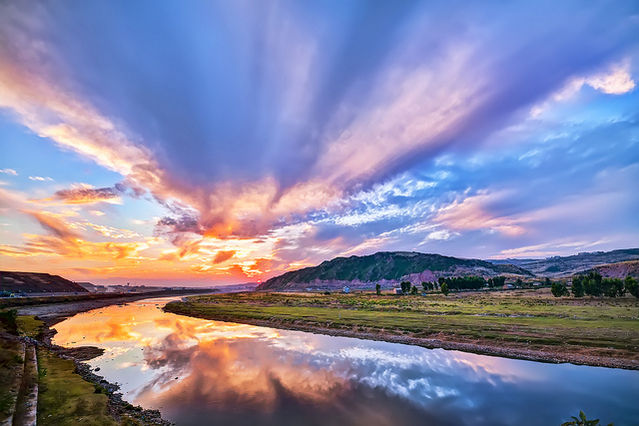Environment
Soliphilia and Other Ways of Loving a Planet
Can it help to name our love for Earth and our despair for its destruction?
Posted May 9, 2016

The bad news most of us encounter regularly about the condition of our global and local environments often seems too much to bear. Probably most of us ignore or sublimate the near-daily knowledge that we’re heating the planet, denuding rainforests, deadening the oceans, exterminating species, and polluting our landscapes and bodies. It’s too much to think about every day. But we also don’t really know how to talk about it if we could.
Is there a name for the overwhelming feeling of environmental damage to the planet? The growing and engulfing environmental crisis is merely decades old, and we’re still feeling our way through it and figuring out how to respond. Better language and an expended vocabulary could help.
Terms of Endearment
An Australian sustainability professor, Glenn Albrecht, has collected and invented new and old terms to help people become aware of, make sense of, and perhaps act on their own feelings of connection to place as they’re shaped by the ever-broadening news about it, good and bad. He lays out what he calls “psychoterrratic” (derived from psyche, for mind, and terra, for earth) connections—those between “states of the earth” and “states of the mind” through many useful and productive concepts.[1] We need them to more fully realize our current conditions and how they affect us mentally.
Here are a few.
Topophilia
Let’s begin with perhaps the most important one, topophilia: positive feelings of connection to, including love for, place, including landscapes, seascapes, and other places. Topophilia is a starting point for caring for the environment because love is the foundation of caring.
If you’re not sure whether you love your place, consider the many ways in which your life depends on and arises out of the environment and the society in which you live. You’re part of your place. It nurtures you. You can nurture it back.
Endomophilia
But what about aspects of a place that you might particularly love because they’re unique to that place or because without those aspects, the place would not be the same. Endomophilia means affection arising from the particular endogenous elements or characteristics of a place—what makes a place different from others. The San Francisco bay area, where I live, is made up of a huge, oblong estuary, about fifty miles (eighty km) long, around which an urban ring has developed over the past century and a half. It’s in many ways a centerpiece of a region with a population of millions. Yet developers have in the past have sought to create more land by filling in the estuary. Fortunately, Save the Bay, a group founded by three women in 1961, managed to put a stop to the infill of this beautiful and complex ecosystem. The organization is still hard at work to protect and restore the estuary to its former ecological vitality—many salt production areas in the south of the bay are being restored to ecologically rich wetlands. Their work is undoubtedly driven in part by their feelings of endomophilia for this particular water body.
Endomophilia may arise from human aspects of an area as well. The famous Golden Gate Bridge spans the opening that connects the San Francisco bay to the Pacific Ocean. This human-made structure is now a characteristic part of the landscape, and for many its beauty reinforces their desires to maintain the balance between the natural and the artificial in the region.
Soliphilia
In the past couple of decades I have increasingly come to appreciate not just the individual things I see and experience in nature, but the ways that they’re all connected together and form a whole that’s greater than the sum of the parts. Sometimes it’s easy to see a flower, a deer, a salamander, or a redwood tree and be impressed by its beauty, agility, resourcefulness, or tremendous age and size. But for most of us it takes some life experience to come to truly appreciate that each individual thing makes no sense by itself but is rather an associate of all of the others in its environment and is indeed itself the outcome of a long history of interrelationships between its ancestors and the environment(s) in which they evolved. That environment of course includes non-living aspects such as the lithosphere, the atmosphere, and the sun, with its life-giving radiation.
Albrecht calls the “love of the interrelated whole” soliphilia. In my view soliphilia, even more than biophilia (which E. O. Wilson popularized as the urge to affiliate with other forms of life), makes us feel more connected to the whole world and supports caring toward all of nature—the living and nonliving parts alike. Soliphilia stretches love from one’s own place (as in topophilia) to the whole.
Solastalgia
If topophilia, endomophilia, or soliphilia bind us to a place or to the whole Earth or cosmos, we feel hurt, sad, or angry when these realms become damaged and degraded. Albrecht proposes the term solastalgia to capture feelings of desolation or melancholy that arise from the chronic deterioration of a loved home environment.
Many of us listen to the seemingly endless barrage of environmental (and other) bad news—fisheries in the oceans being depleted one after another, vast acreages of rainforest toppling daily, firestorms in Calgary, and, driving many other problems, increasingly dire news about the warming of the planet. Solastalgia can be helpful in identifying those moments when our emotional responses to these travesties just seem to overwhelm. Or the term can name and give voice to the sadness, despair, or desolation we experience when seeing more of our home environment ruined—a nearby forest clear-cut for a shopping mall or industrial park or, an example from my life, giant red oak trees that I grew up with cut down just before my return home to visit relatives for the holidays last December (which I’ve just learned today, Mother’s Day, that my mother managed to save a segment of!).
For many, the melancholia that arises when we see our local environments or planet trashed can be experienced as an almost incapacitating numbness that drives us from action toward a kind of reluctant and depressed acceptance. The environmental psychology specialist and consultant Renee Lertzman writes about how methods and concepts from psychoanalysis can release people’s energies that have been tied up in what she calls “environmental melancholia.”[2]
By naming our experiences of love for nature, wholeness, connection, and place and also our emotional responses of despair, sadness, desolation, and even despondency when we see these loved places and spheres threatened and diminished, we can likewise free up emotional energy to respond and reverse the destruction. It’s only been a matter of decades since the knowledge of—and accompanied negative feelings about—widespread environmental destruction have become a matter of the daily routine enveloping our lives. These terms, some of them new, could help us come to terms with our society’s destructive consequences and help set us on a healthier path. Use them bravely.
Learn about my book: Invisible Nature
Follow me: Twitter or Facebook
Read more of my posts: The Green Mind
[1] Glenn Albrecht, “Psychoterratic Conditions in a Scientific and Technological World,” in Jr, P. H. K., & Hasbach, P. H. (Eds.). (2012). Ecopsychology: Science, Totems, and the Technological Species. Cambridge, Mass: The MIT Press. Citations to the origins of the terms not invented by Albrecht can be found in his text.
[2] Renee Lertzman. (2015). Environmental Melancholia: Psychoanalytic dimensions of engagement. New York, NY: Routledge.




